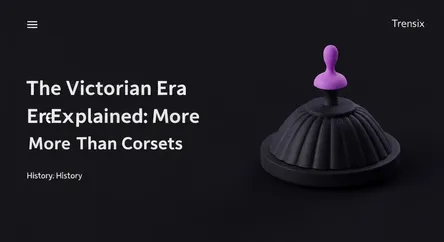History
The Victorian Era Explained: More Than Corsets

Explore the Victorian Era (1837-1901), a time of immense industrial, social, and imperial change in Britain that continues to influence us today.
What is it?
The Victorian Era marks the period of Queen Victoria's reign in Britain, from 1837 to 1901. It was a time of profound transformation, as the country shifted from a rural, agricultural society to an urban, industrialized one. This era was characterized by the rapid growth of the British Empire, which became the dominant global power, and major technological advancements like the expansion of railways and the telegraph. Victorian society was known for its strict class hierarchy, emphasis on morality and propriety, and the rise of a powerful middle class that shaped cultural values. Despite the progress and prosperity, it was also a period of stark contrasts, with widespread poverty, child labor, and poor living conditions in burgeoning cities.
Why is it trending?
The Victorian Era's influence continues to echo in modern culture, making it a recurring point of fascination. Its distinct aesthetic is frequently revived in fashion through the "Neo-Victorian" trend, which incorporates elements like lace, high collars, and corsets into contemporary designs. Furthermore, the era's blend of technological optimism and dark social realities has fueled the popular steampunk subculture, a sci-fi genre imagining a world powered by 19th-century steam technology. The period's dramatic social landscape, complex characters, and intricate mysteries also make it a popular setting for films and television series, with shows like "Victoria" and adaptations of "Sherlock Holmes" consistently capturing public imagination.
How does it affect people?
The foundations of the modern world were largely built during the Victorian Era. Many scientific breakthroughs and inventions from this period, including germ theory and the internal combustion engine, are fundamental to our lives. The era saw the birth of political movements like organized feminism and significant social reforms in education, child labor, and voting rights that shaped modern democracy. Culturally, Victorian ideals surrounding family, morality, and distinct gender roles, though evolved, still influence contemporary social debates. Even modern infrastructure, from railway lines to city sanitation systems, often has its origins in the massive industrial and urban projects of the 19th century.